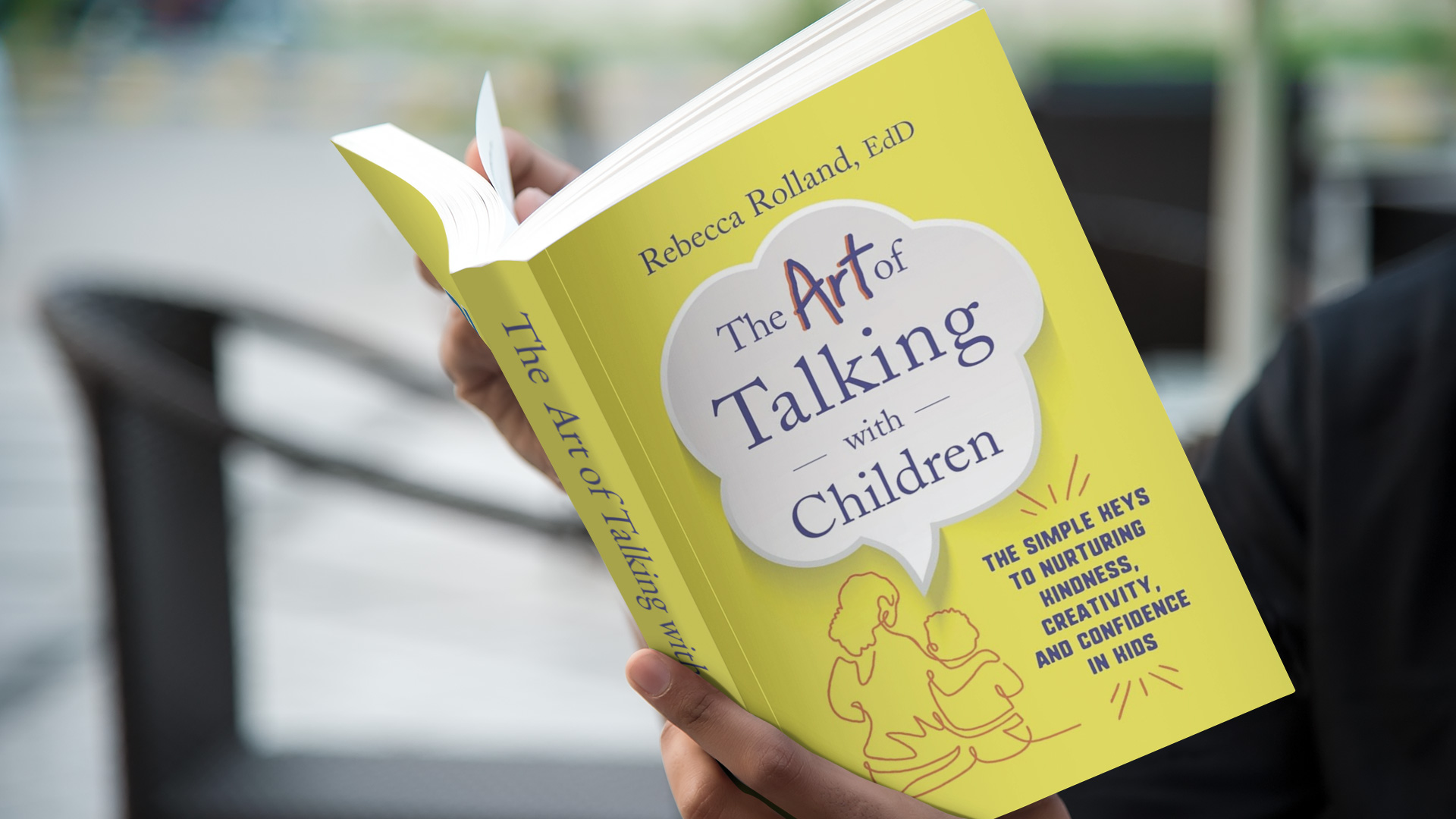Rebecca Rolland’s The Art of Talking with Children: The Simple Keys to Nurturing Kindness, Creativity, and Confidence in Kids explores the universal need to be supported through conversation and language, especially in traumatic or stressful times. The book is catching on with parents and caregivers in the United States and around the world, with Spanish, Chinese, Korean and Ukrainian editions available. Early Learning Nation magazine spoke to Rolland—speech pathologist, Harvard lecturer and mother of two—about the research behind the book and the implications for parenting and teaching.
About the title
Why is it called The Art of Talking with Children?
I tried to bring in research-based principles about what we know works for conversation, especially with young children, and all the different ways that it can build empathy and confidence. But the more I’ve worked with kids (and as a parent myself), I found that there really isn’t just one way to do things or even multiple ways of doing things. It is so much about the authentic relationship between the adult and the child and the family.
What about the with in the title? Why talking with instead of talking to?
Originally, it was The Art of Talking to Children. But I prefer with, because I am trying to get across that message that it’s the back and forth between the adult and the child that makes for a richer conversation.
On Play, Talk and Playful Talk
You say that play has been sidelined. What’s behind that observation?
There’s a lot of discussion these days about kindergarten being the new first grade. Academics are pushed earlier and earlier. One, children aren’t necessarily developmentally ready for the concepts that are coming at them so early. Two, play is a fundamental part of children learning, especially at the early ages.
I keep hearing experts say that play is learning.

Right, and when we say, “Here’s play on one side and learning on the other side,” we’re actually missing a big opportunity for children to enjoy learning and to learn more through play. Really, they should be braided together much more. If we focus on a playful approach rather than an information-heavy rote learning type of style, children will be able to think more critically into actually learning in much deeper ways. Unstructured, or free play, where they’re just allowed to create their own goals and to collaborate with their friends actually does build their executive function skills and other skills.
Is playful learning just another way of saying being a fun teacher?
I do think that play goes beyond fun, although obviously play and fun are pretty interconnected, but it has more to do with the way we’re encouraging children to think.
Can you say more about that?
Rather than converging on one right answer, try to think in a generative fashion, so to think of all the possible answers, and to “play” or experiment with different ideas and different solutions. A lot about play is tinkering, which means taking a more relaxed approach to correctness and efficiency, and instead prioritize things like the ability to consider multiple solutions to the same problem. And not in a race, but in more of a back and forth with other kids or with adults.
There’s not a right answer all the time.
Even the right answer might have holes, or the right answer might only be right in certain circumstances.
On a Culture of Mastery
Can you explain the difference between mastery and performance?
Mastery is where children feel okay about making mistakes and actually embrace mistakes as part of learning, and where multiple responses and types of responses are encouraged. It’s linked to better learning outcomes, and it’s also linked to more motivation and more children feeling socially engaged and feeling as if they can have better friends and all of that.
The alternative is performance culture, where children want to get things and they want to be first. You might think that would be better for academics, but in fact it’s linked to worse academic outcomes and lower engagement for children. So maybe this emphasis on mistake making and journeying and learning actually does enhance academic outcomes. It doesn’t draw away from it.
That’s what started my questioning around play and learning and thinking. The playful approach actually supports children socially as well as academically. Edward Deci and Richard Ryan are generally credited with highlighting the culture of mastery, which is linked to self-determination.
Putting It into Practice
How does noticing our interactions with children help us improve those interactions?
Simply taking the time to notice, not necessarily even to write down, but to notice and reflect—that goes a long way toward being mindful about how to make conversations more meaningful and more interesting for everyone. It can be as simple as noting in your mind, “Oh, this to me was a great conversation. I felt really connected to my child or children.” And thinking about, well, why might that be?
The book presents the ABCs of Rich Talk, starting with A for adaptive. Why is that important?
It’s critical to adapt to not only time and place, but to one’s cultural community. The demands and expectations of talk are so varied. Unfortunately, a lot of research is predicated on this assumption that this is the right way, or these people are talking correctly and these people are talking incorrectly. And I think that’s a really dangerous and unproductive conversation to be having.
We’re finding now is that diversity in talk is hugely important, that children benefit from having people who talk to them and with them in different ways. They learn from things like code shifting, from home type of language to school type of language, or from Mandarin or another language to English. This kind of activity is actually beneficial for them, for their brain development and even for them socially.
What’s your advice for a parent or caregiver who doesn’t feel comfortable with silly or playful talk?
We all have our comfort zones in terms of what we want to do, our personal style, our level of silliness, but we can all be creative with language and with the way we talk with children. You don’t have to make up words or invent private jokes. It might be just that for you, you like to imagine, for example, what will happen to the world in 50 or 100 years. It’s probably better to stick to your own style, while trying to be more open-ended and creative with some of their questions and thoughts. Sometimes children will do the silliness for you.

Mark Swartz
Mark Swartz writes about efforts to improve early care and education as well as developments in the U.S. care economy. He lives in Maryland.



